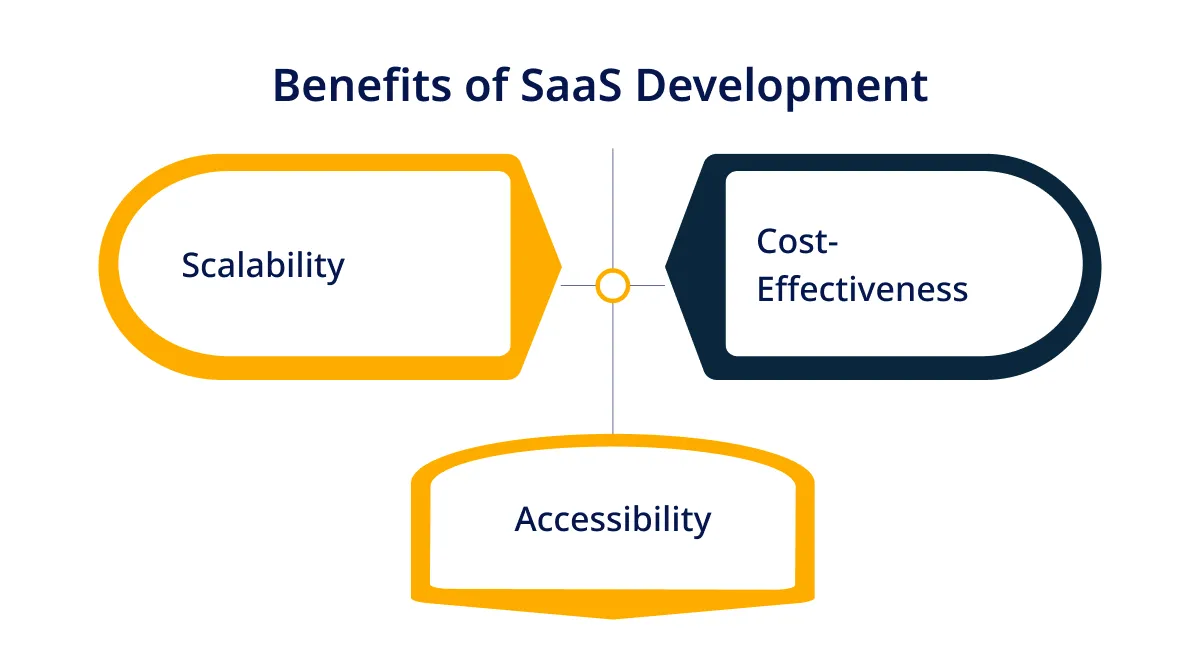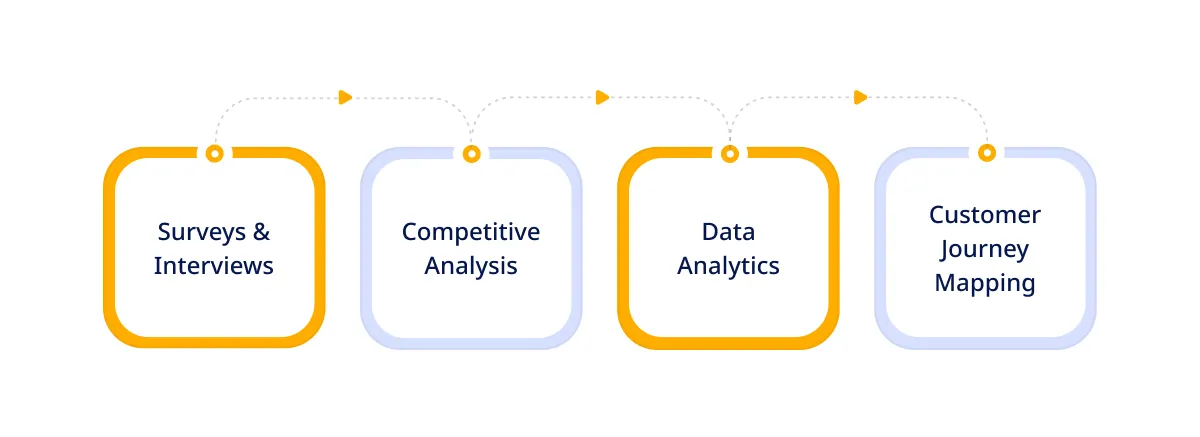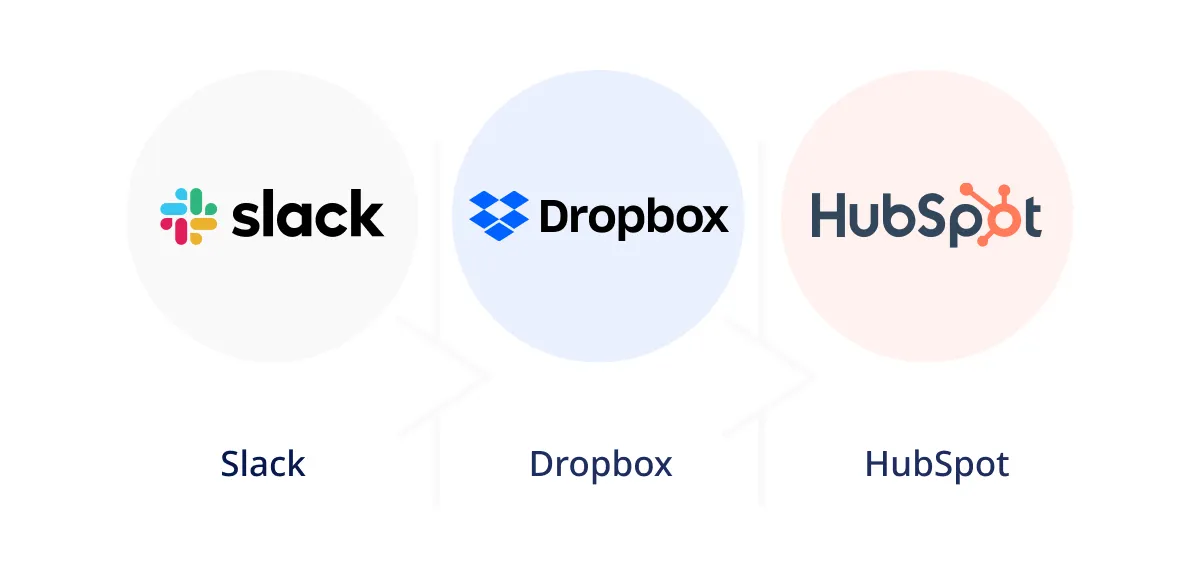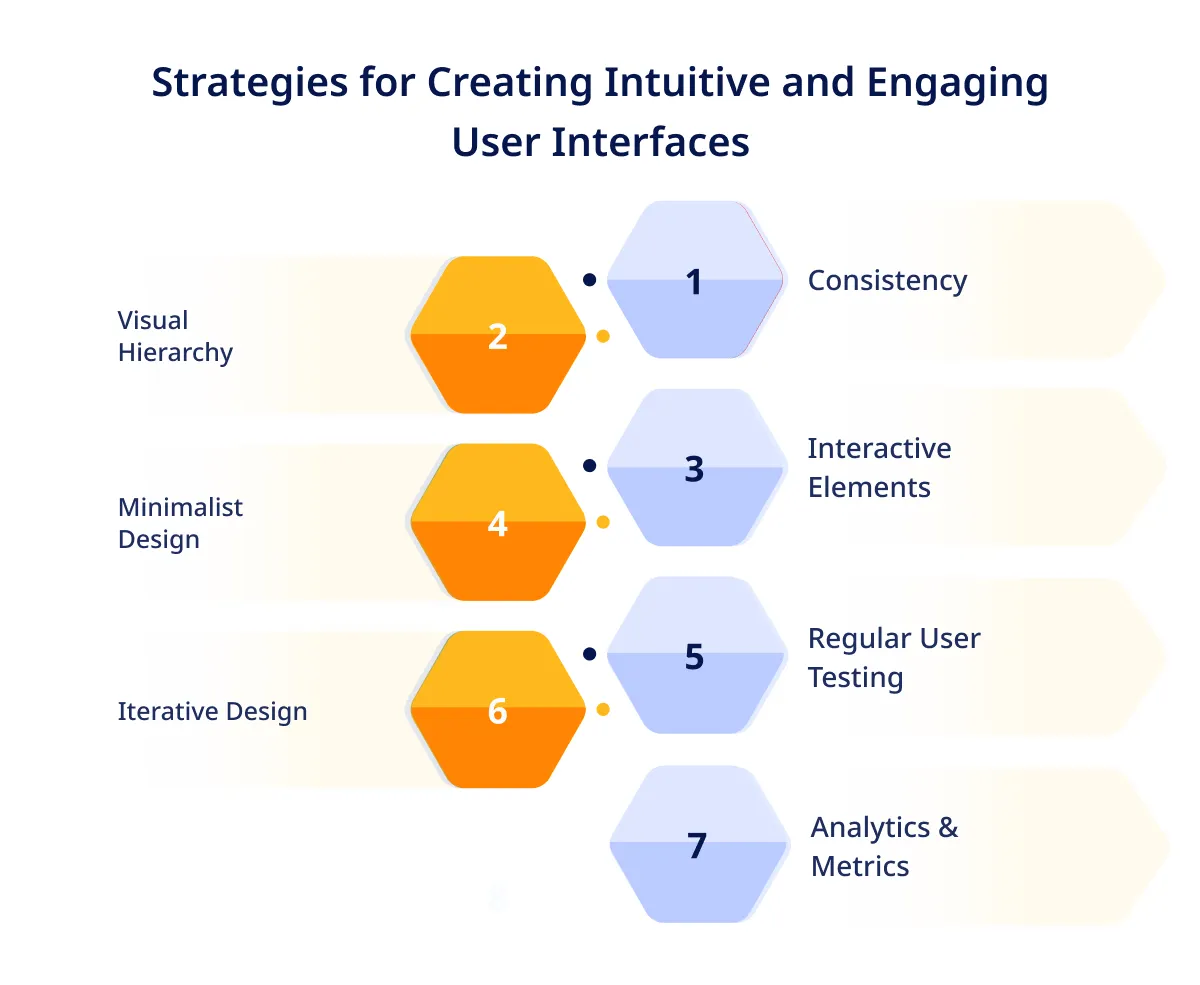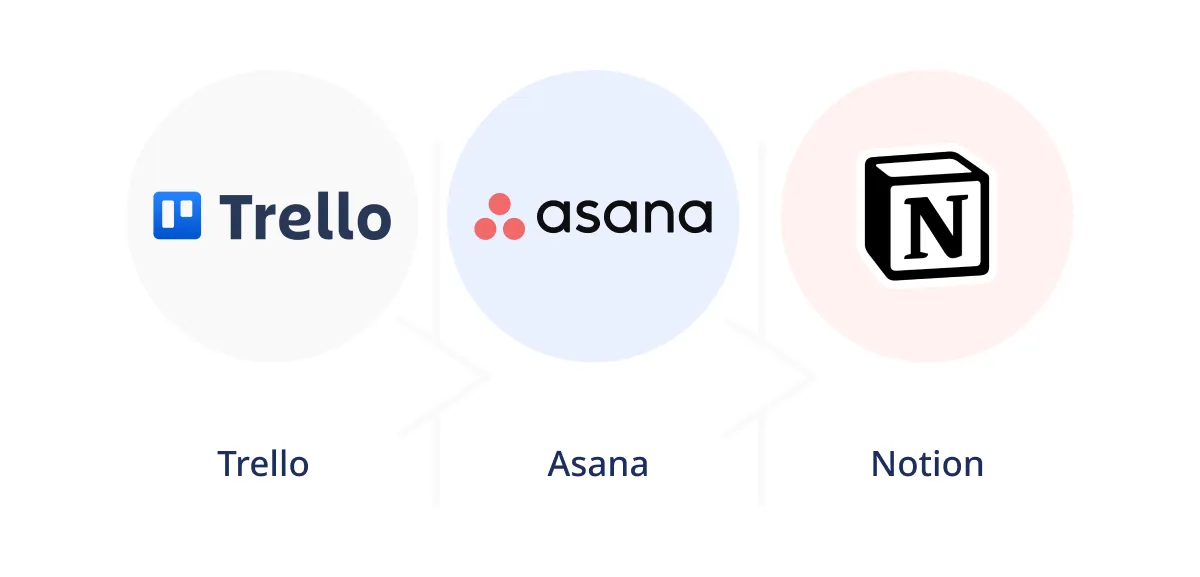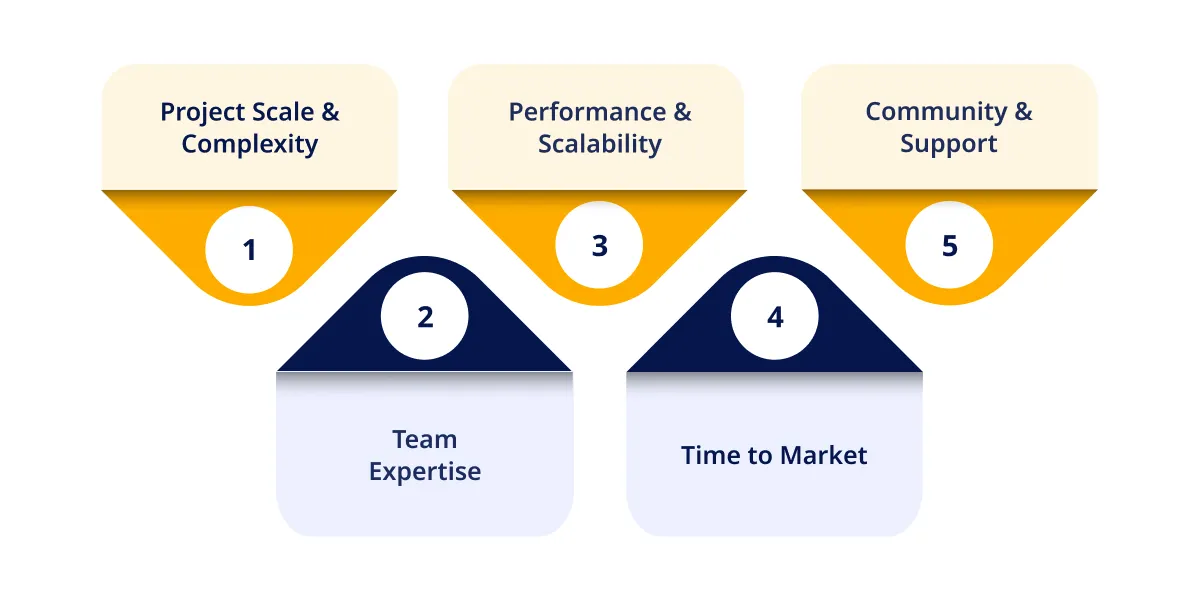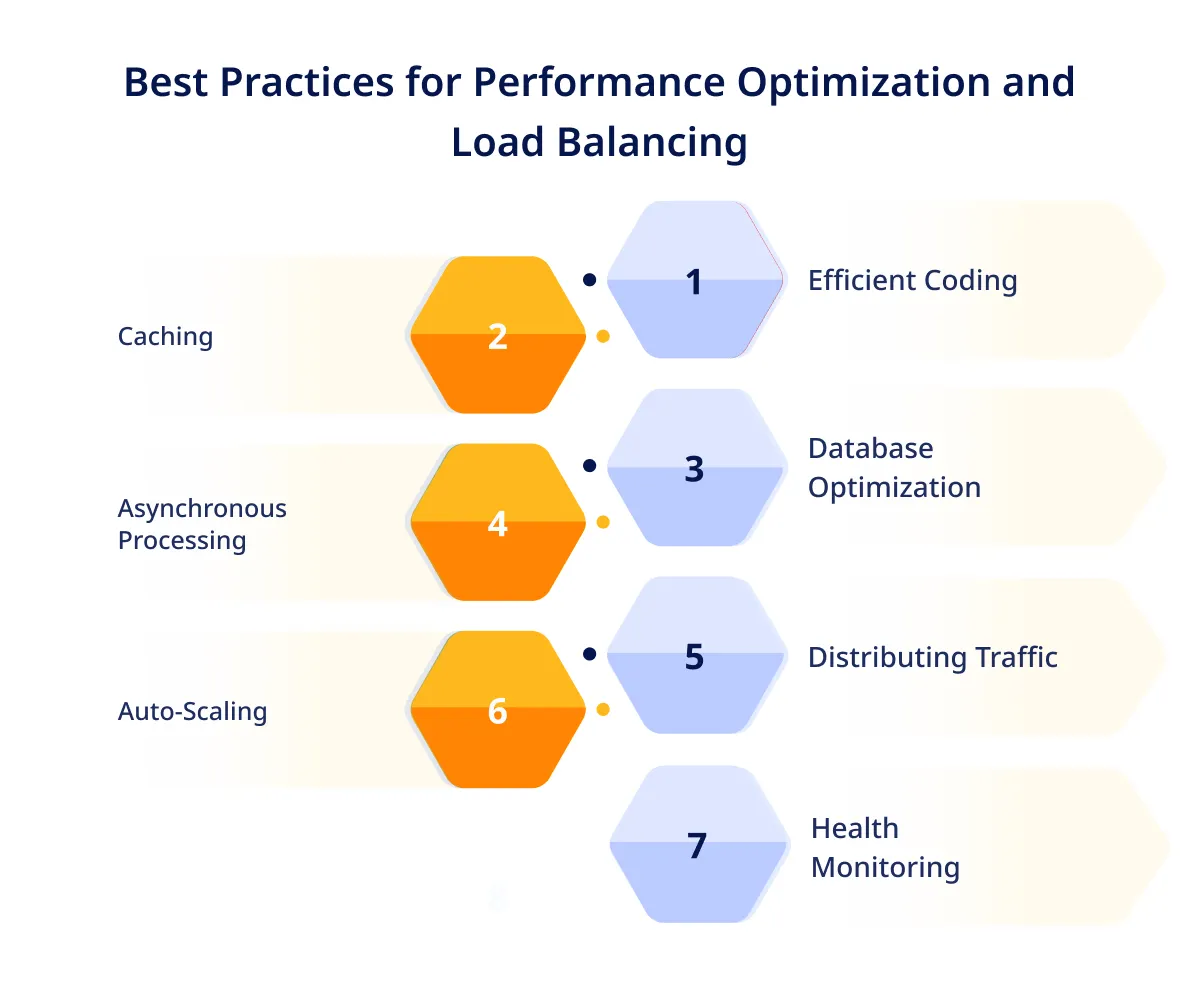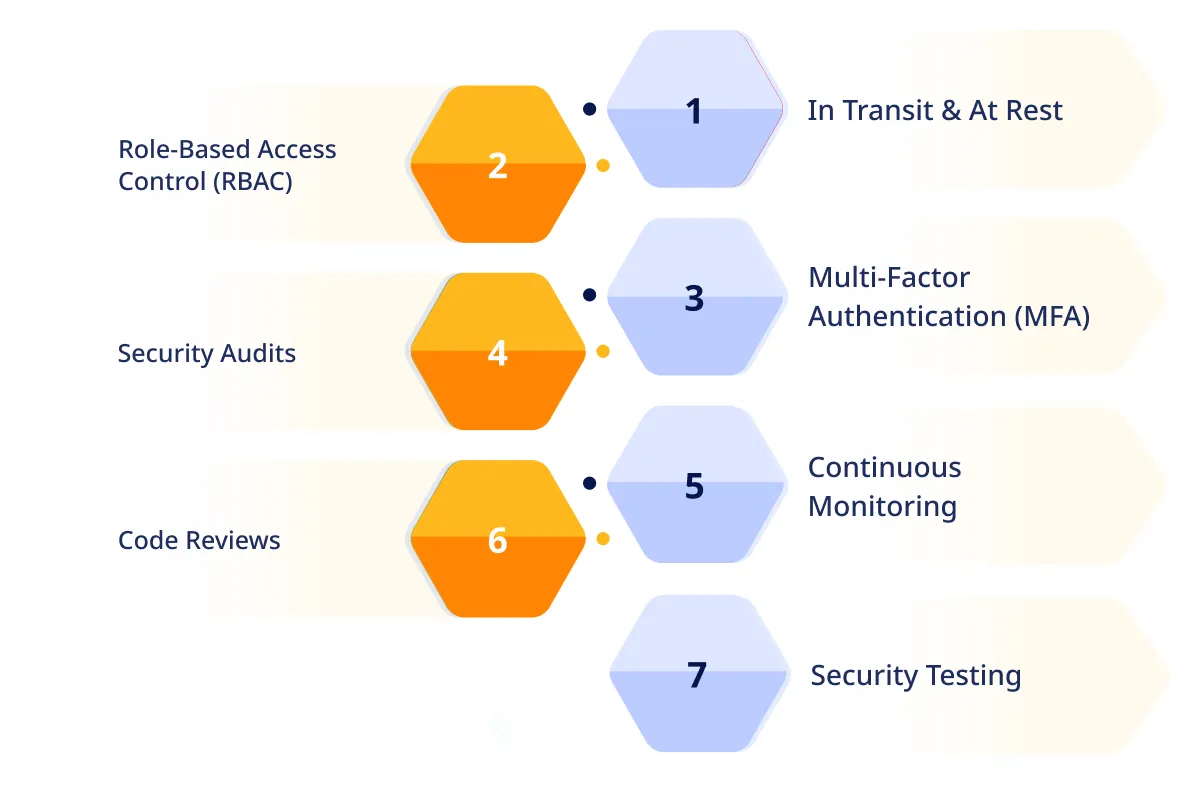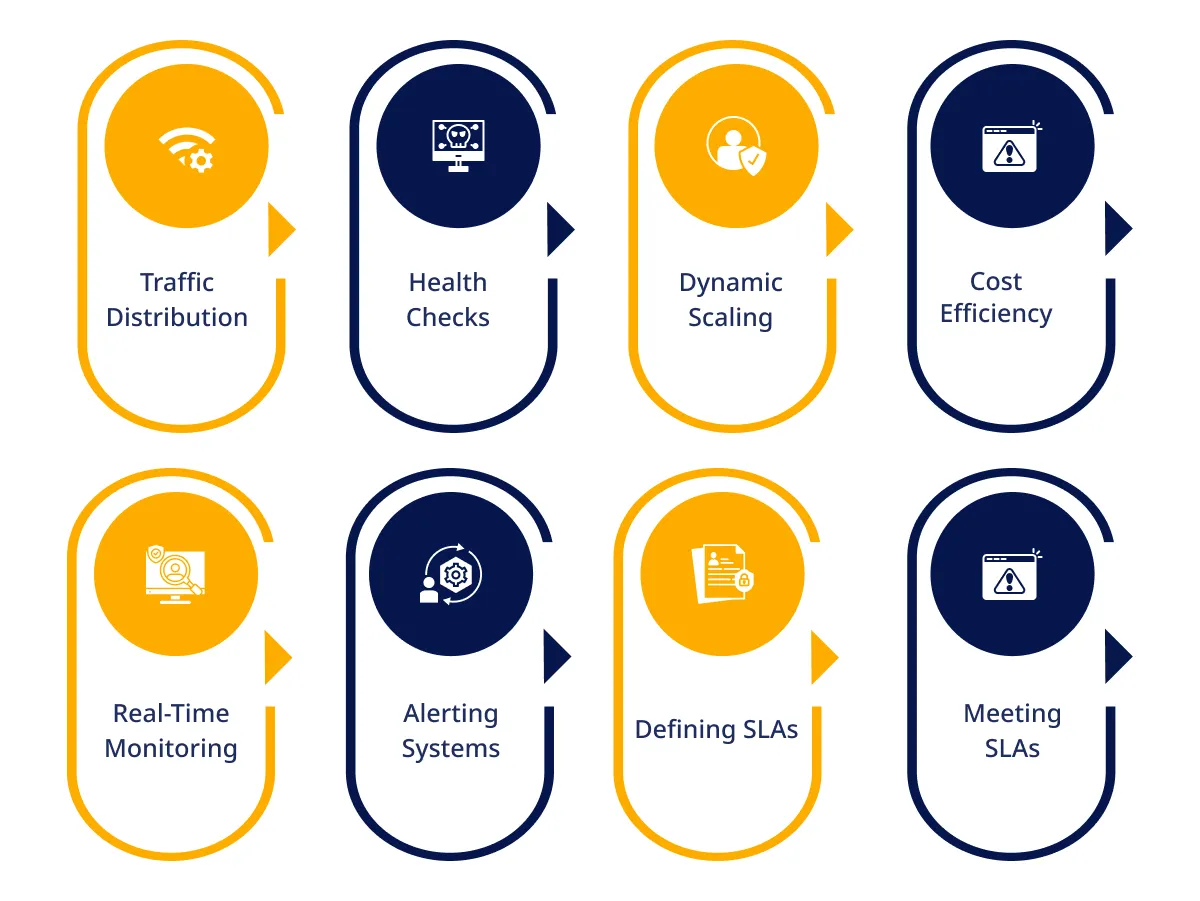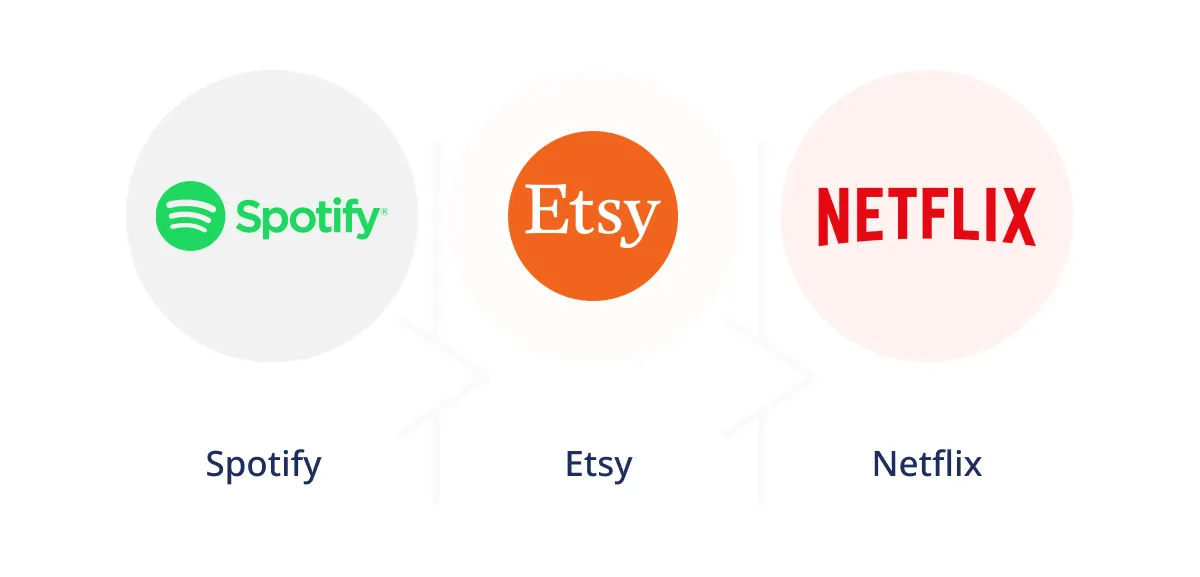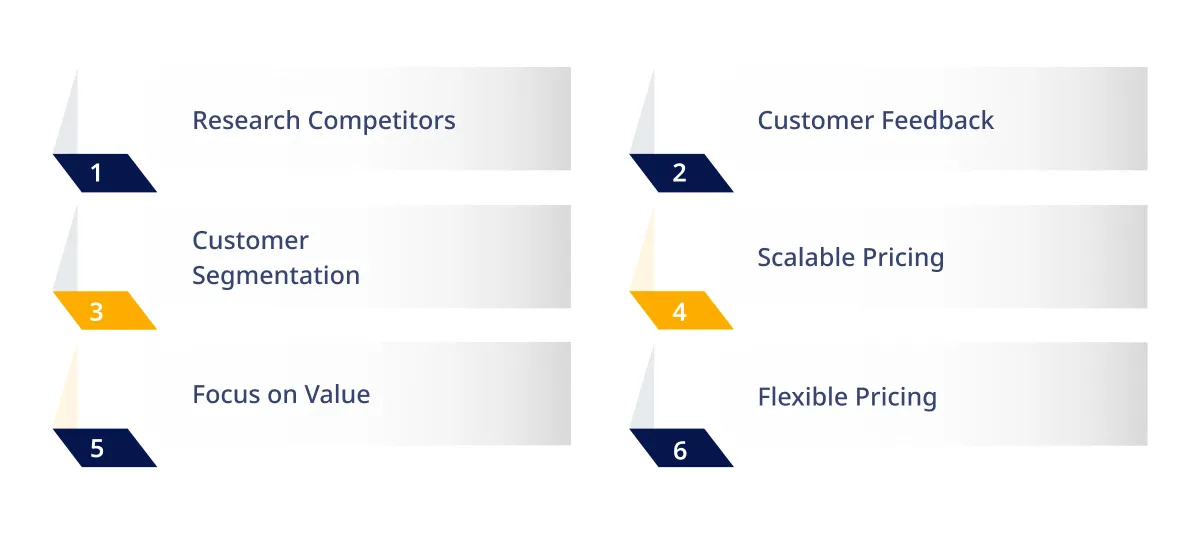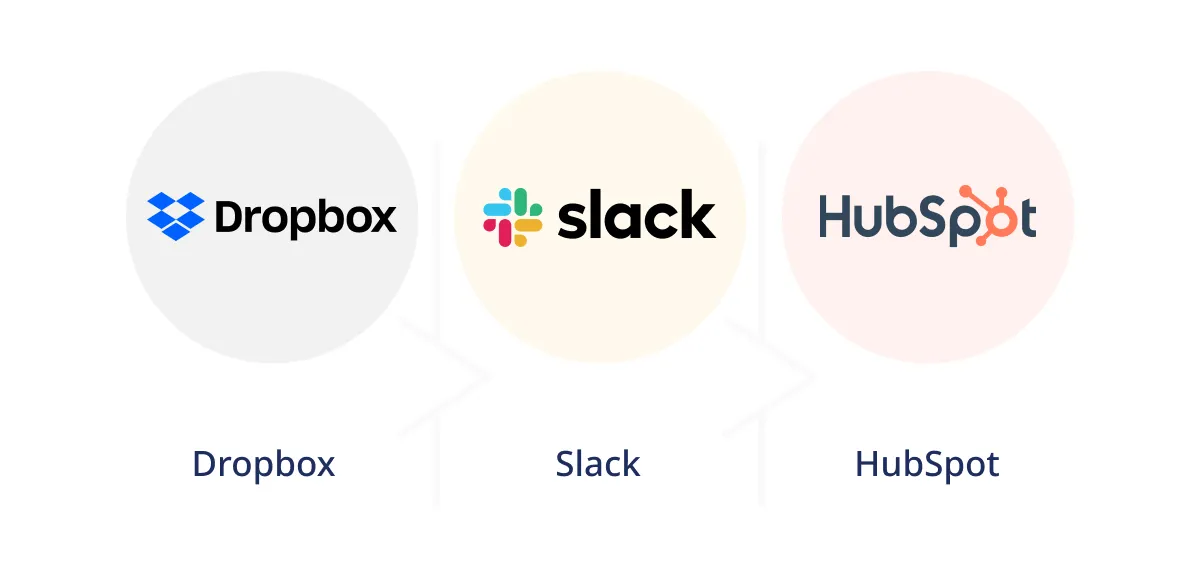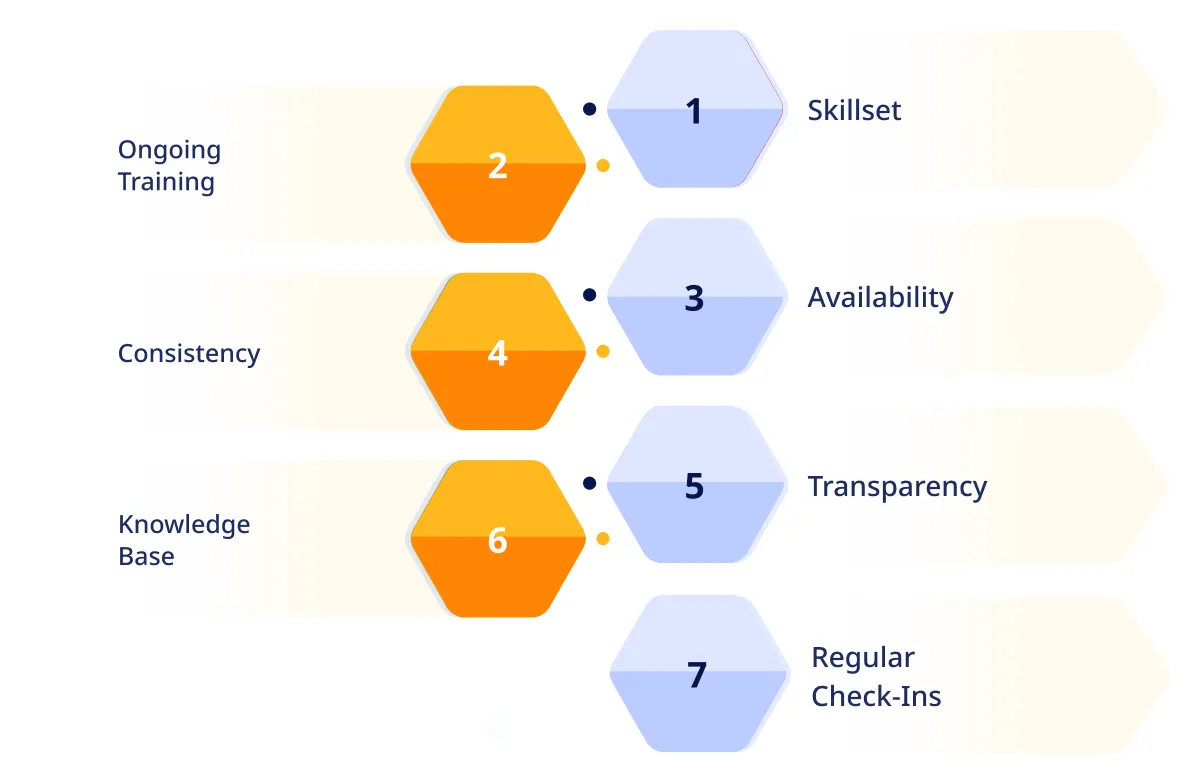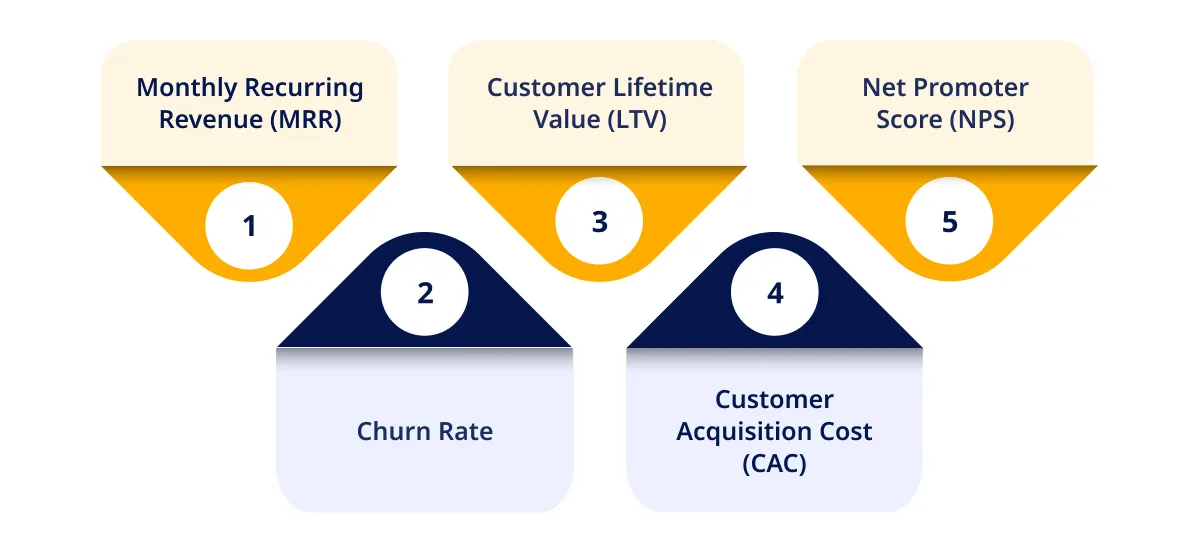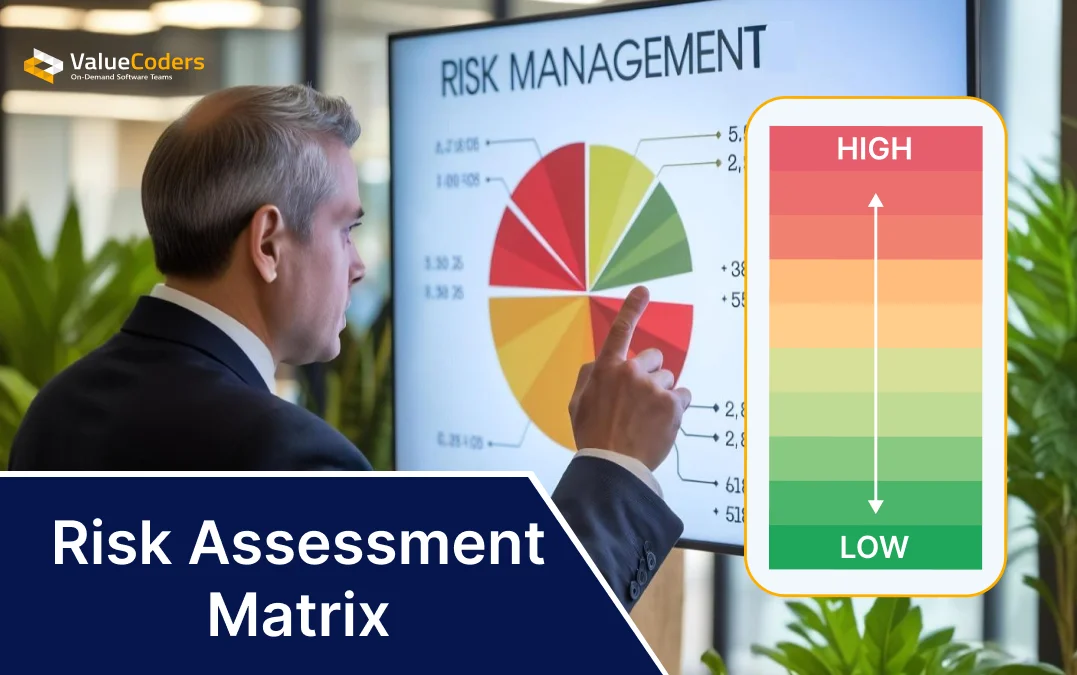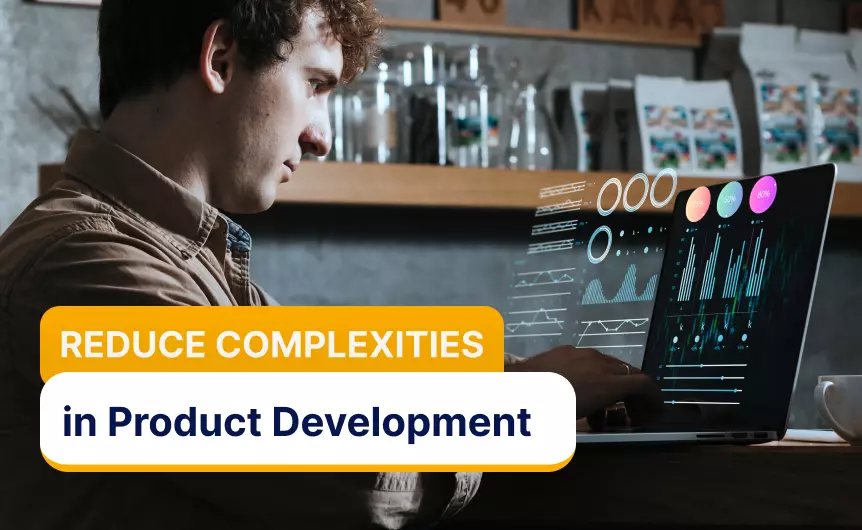Are you curious about the secrets of successful SaaS development for a business?
If yes, then your search ends here!
SaaS i.e. Software as a Service, has completely changed the way companies work in this digital atmosphere. It offers efficient, scalable, and cost-effective business solutions tailored to the modern needs of today’s businesses.
But what lies behind the seamless user experiences & powerful functionalities of successful user-centric SaaS products? This is why you must go through SaaS development secrets.
Let’s check out the key SaaS development strategies, techniques, and core principles that empower SaaS developers to develop high-quality business applications.
Understanding SaaS Development
SaaS development provides a method of software delivery where apps are hosted remotely by a provider & made available to customers on the Internet.
Businesses access these apps through a web browser instead of installing & maintaining software on single computers/local servers.
Benefits of SaaS Development
Businesses access SaaS applications through a web browser instead of installing & maintaining software on single computers/local servers.Here, you will find some important advantages of SaaS development:
1. Cost-Effectiveness: SaaS development removes the need for expensive hardware & maintenance. This further reduces upfront costs & ongoing expenses.
2. Scalability: SaaS platforms easily scale with your business. They accommodate growth without the need for significant infrastructure investments.
3. Accessibility: Employees can access essential tools & applications using SaaS from anywhere. It fosters remote work & enhances productivity.
Key Differences Between SaaS & Traditional Software Models
Let’s talk about the key differences between SaaS development & traditional business software development models. It is compared after considering some parameters as discussed below:
1. Deployment: Traditional software is installed locally on computers & servers, while SaaS is hosted in the cloud and accessed via the Internet.
2. Maintenance: In traditional models, a business is responsible for updates & maintenance. Using SaaS, the provider handles all updates & ensures the user always has access to the latest features.
3. Cost Structure: Traditional software typically needs a significant upfront investment & ongoing maintenance fees. On the other hand, SaaS operates on a subscription model. It spreads costs over time & offers more predictable budgeting.
Build innovative products with our expert guidance.
Uncovering SaaS Development Secrets For Building Innovative Software Products
Building exceptional SaaS products needs a deep understanding of all SaaS development strategies and the latest tools. Here, we uncover the top secrets for creating SaaS solutions.
By integrating the following listed secrets into your SaaS development process, you can build innovative software products that not only fulfill the technical requirements but also drive business success.
1) Identifying Market Needs & Opportunities
Building a successful SaaS product begins with deep market research. Identifying unmet needs/opportunities is important for developing a software solution that fulfills users’ needs and stands out in a competitive landscape.
In fact, businesses can make informed decisions about pricing strategies, SaaS product ideas, and marketing approaches using comprehensive market research. This ultimately lessens the risk of product failure & ensures that resources are invested wisely.
Techniques for Identifying Customer Pain Area & Market Gaps
By using the following SaaS techniques, you can identify key opportunities & develop SaaS products that truly fulfill market demands.
By using the following SaaS techniques, you can identify key opportunities & develop SaaS products that truly fulfill market demands.
1. Surveys & Interviews: Conduct surveys & interviews with potential users that help gather qualitative data on their challenges & needs.
2. Competitive Analysis: Look for common complaints & unmet needs that your software product can address.
3. Data Analytics: Use analytics tools to identify trends/patterns in user behavior. Analyze customer feedback, support tickets, and usage data to know pain points and areas for improvement.
4. Customer Journey Mapping: Create long maps of the customer journey to understand the entire experience from the user’s perspective.
List of Successful SaaS Products 
Here is the list of top SaaS development solutions you must know for your business growth.
1. Slack: Slack identified a significant market need for efficient team communication & collaboration.
2. Dropbox: Dropbox emerged from the recognition that people needed a simple and reliable way to store & share files.
3. HubSpot: HubSpot noticed that SME businesses struggled with disparate marketing tools & complex systems.
Also read: Guide On SAAS Application Development Challenges & Solutions
2) Designing for the User Experience
In SaaS development, designing for the user experience is an important concept that sets your SaaS product apart in this competitive market and thus brings loyalty.
Strategies for Creating Intuitive & Engaging User Interfaces
Let’s find out some successful strategies for developing engaging user interfaces for your next project as discussed below:
1. Consistency: Use common UI patterns and visual elements to help users navigate and understand your product quickly.
2. Visual Hierarchy: Utilize visual hierarchy to guide user attention to important elements & actions.
3. Interactive Elements: Embed interactive elements viz. buttons, sliders, and dropdowns, to make the user interface engaging.
4. Minimalist Design: Go for this design approach to reduce distractions & focus on core functionalities.
5. Regular User Testing: Conduct usability testing sessions with real users to gather feedback on your design.
6. Iterative Design: Implement an iterative design process where feedback is continuously collected & applied.
7. Analytics & Metrics: Use analytics tools to track user behavior & engagement with your product. Analyze these metrics to get insights how users interact with your interface.
Examples of SaaS Products with Exceptional UX
Have a quick look at the following SaaS products with intuitive user interfaces:
1. Trello: Its card-based interface is a prime example of an intuitive & visually appealing user experience.
2. Asana: It excels in providing a clean and user-friendly interface for project management.
3. Notion: It combines flexibility & simplicity and allows users to customize their workspace without complexity.
3) Choosing the Right Technology Stack
By understanding the strengths & weaknesses of each stack, companies can ensure a robust, scalable, and efficient development process. Here is an overview of popular tech stacks in SaaS development:
MEAN Stack
Components: MongoDB, Express.js, Angular, Node.js.
Usage: Ideal for full-stack JavaScript applications, enabling smooth data flow between client and server.
MERN Stack
Components: MongoDB, Express.js, React, Node.js.
Usage: Similar to MEAN, but uses React instead of Angular, providing a flexible and efficient front-end solution.
LAMP Stack
Components: Linux, Apache, MySQL, PHP.
Usage: A classic stack for web development, widely used for its stability and strong community support.
Criteria for Selecting the Appropriate Technologies
Selecting the right tech stack is an important task for the success of your SaaS product. Have a look at the following factors before selecting a tech stack:
1. Project Scale & Complexity: You must assess the size & complexity of your SaaS product.
2. Team Expertise: Consider the technical skills & experience of your development team.
3. Performance & Scalability: Evaluate your application’s performance needs and scalability requirements.
4. Time-to-Market: If you need to launch quickly, a stack with robust frameworks & libraries (viz. MEAN or MERN) can accelerate development.
5. Community & Support: Opt for technologies with strong community support & extensive documentation.
Partner with us for the latest solutions.
4) Ensuring Scalability & Performance
Scalability is essential in SaaS development as it handles increasing numbers of users & growing amounts of data without compromising performance. This elasticity helps manage costs effectively while meeting demand.
However, maintaining performance as user load increases ensures a consistent & positive user experience. This reliability is critical for user retention and satisfaction.
Techniques for Designing Scalable Architectures
One can create robust, reliable, and efficient solutions by designing scalable architectures and following some performance optimization best practices.
1. Microservices Architecture
Using this, break down the app into smaller, independent services that can be further developed, deployed, and scaled individually.
Benefits: Improves fault isolation, enables independent scaling of services, and simplifies updates and maintenance.
2. Serverless Computing
Serverless platforms viz. AWS Lambda, Azure Functions automatically scales with the load, ensuring efficient resource usage.
Benefits: Reduces operational overhead, as there is no need to manage servers, and allows for automatic scaling and pay-per-use pricing.
3. Containerization
Containers, such as Docker, ensure that applications run reliably regardless of where they are deployed.
Benefits: Enhances portability, scalability, and efficiency in resource utilization.
Best Practices for Performance Optimization & Load Balancing
By using the following best practices, you can create robust, reliable, and efficient solutions that grow alongside your users’ needs.
1. Efficient Coding: Write clean, efficient code and regularly refactor to improve performance.
2. Caching: Implement caching mechanisms (viz. Redis, Memcached) to store frequently accessed data, speeding up response times, and reducing database load.
3. Database Optimization: Use indexing, query optimization, and database partitioning to increase database performance.
4. Asynchronous Processing: Implement asynchronous processing for tasks that do not require immediate completion.
5. Distributing Traffic: Use load balancers (viz. NGINX, HAProxy) to distribute incoming traffic across multiple servers.
6. Auto-Scaling: Configure auto-scaling groups to automatically adjust the number of running instances based on current demand.
7. Health Monitoring: Regularly monitor the health of the server. Implement automatic failover mechanisms to redirect traffic from failed instances to healthy ones.
5) Implementing Robust Security Measures
Unauthorized access to sensitive data is a major concern in SaaS development. Attackers often use phishing & social engineering tactics to hack sensitive information.
Hence, ensuring data isolation between tenants is crucial to prevent data leaks & breaches. However, implementing robust security measures is tough for the trust & success of any SaaS product.
1. In Transit & At Rest: Ensure all the data is encrypted both in transit (i.e. SSL/TLS) and at rest (i.e. robust encryption algorithms).
2. Role-Based Access Control: Implement RBAC to restrict access to data & functions based on user roles. This limits exposure to sensitive information &reduces the risk of insider threats.
3. Multi-Factor Authentication: Use MFA to add an extra layer of security, requiring users to provide multiple forms of verification before accessing the system.
4. Security Audits: Do security audits regularly to identify vulnerabilities and ensure compliance with security policies.
5. Continuous Monitoring: Implement continuous monitoring to detect & respond to security incidents in real-time.
6. Code Reviews: Perform thorough code reviews to identify & fix security vulnerabilities during the development phase.
7. Security Testing: Integrate security testing into the software development lifecycle, including penetration testing, vulnerability scanning, and automated security tools.
6) Building a Reliable Infrastructure
Having a reliable infrastructure is one of the best SaaS development secrets for modern businesses. You must know the following aspects for developing a good infrastructure.
About Amazon web services
AWS offers a complete suite of cloud services, including computing power, storage, and databases, tailored for scalable SaaS development.
It provides high availability, robust security features, and a large network of data centers to ensure your SaaS product serves users worldwide with minimal latency. Mobile proxies further enhance this by routing traffic through real mobile devices, enabling access to networks that are often difficult to block. This ensures a more reliable and undetectable browsing experience for location-based services or app testing.
About Microsoft Azure
Azure is known for its integrated cloud services, spanning computing, analytics, storage, and networking.
Its strong support for enterprise applications, hybrid cloud capabilities, and advanced AI and machine learning services make it a popular choice for top offshore software developers.
About Google Cloud Platform (GCP)
GCP provides a wide range of cloud computing services viz., powerful data analytics & machine learning tools.
It excels in big data and analytics, with services viz. BigQuery, and offers strong performance and security, making it ideal for building SaaS applications.
Strategies for Ensuring High Availability and Uptime
By implementing strategies for high availability & uptime, you can ensure that your SaaS application remains robust and ready to meet the demands of modern users.
1. Traffic Distribution: Use load balancers to distribute incoming traffic evenly across multiple servers.
2. Health Checks: Configure load balancers to perform regular health checks on servers, automatically rerouting traffic away from unhealthy instances.
3. Dynamic Scaling: Implement auto-scaling to automatically adjust the number of running instances based on current demand.
4. Cost Efficiency: Auto-scaling helps optimize costs by reducing the number of running instances during periods of low demand.
5. Real-Time Monitoring: Use monitoring tools to track the performance & health of your infrastructure in real-time.
6. Alerting Systems: Set up alerting systems to notify your operations team of any anomalies or potential issues.
7. Defining SLAs: Establish clear SLAs that define the expected uptime and performance standards for your SaaS product.
8. Meeting SLAs: Regularly review & adjust your infrastructure/processes to ensure that you consistently meet or exceed your SLAs.
Discover the secrets to building top-notch products.
7) Continuous Integration and Continuous Deployment (CI/CD)
Implementing CI/CD is required for modern SaaS development. By using the right tools & practices, businesses can achieve faster delivery, improved code quality, and greater collaboration.
1. Faster Time to Market: CI/CD automates the integration and deployment process, allowing development teams to deliver new features and updates more rapidly.
2. Improved Code Quality: By integrating code changes frequently and running automated tests, CI/CD ensures that issues are detected and resolved early in the development cycle.
3. Reduced Risk: Automated testing and deployment reduce the likelihood of human errors. CI/CD pipelines can roll back changes automatically if issues are detected, minimizing the impact on production systems.
4. Enhanced Collaboration: CI/CD promotes better collaboration among development, operations, and QA teams.
Tools for Implementing CI/CD Pipelines
Have a look at the top SaaS tools for implementing CI/CD pipelines:
1. Git: Use Git for version control to manage and track code changes.
2. Jenkins: It is an open-source automation server that provide support in developing, testing, and deploying code.
3. CircleCI: A cloud-based CI service that automates the build, test, and deployment process. CircleCI is known for its ease of use and scalability.
4. Travis CI: A CI service that integrates seamlessly with GitHub, making it easy to set up and run automated tests and deployments.
5. AWS CodePipeline: It is a continuous delivery service that automates the build, test, and deploy phases using AWS services.
6. GitLab CI/CD: An integrated CI/CD tool within GitLab that supports automated pipelines, continuous delivery, and deployment.
7. Azure DevOps: A set of development tools from Microsoft that supports CI/CD, project management, and version control.
Companies That Have Successfully Adopted CI/CD
Check out the following companies that have implemented CI/CD in their business projects.
1. Spotify: It uses CI/CD to deliver new features and updates to its music streaming platform continuously.
2. Etsy: It has implemented CI/CD to improve the deployment process for its e-commerce platform.
3. Netflix: It utilizes CI/CD to manage its complex and distributed infrastructure. The company uses automated pipelines to test & deploy microservices across its global network.
Also read: Moving From On-Premise To SaaS: SOX Compliance Considerations
8) Effective Pricing Models
Choosing the right pricing model is one of the important aspects for the success of your SaaS development.
Types of Pricing Models
1. Subscription-Based: Customers pay a recurring fee (monthly/annually) to access the software.
Example: Adobe Creative Cloud offers a subscription-based model where users pay a monthly fee for access to various design tools.
2. Freemium: Basic features are offered for free, while advanced features require payment.
Example: Slack provides a free tier with basic features & charges for premium features such as advanced integrations and increased storage.
3. Pay-As-You-Go: Customers are charged based on their actual usage of the software.
Example: Amazon Web Services charges users based on the resources they consume, viz. computing power, storage, and data transfer.
4. Tiered Pricing: Different pricing levels are offered based on varying features or usage limits.
Example: HubSpot offers tiered pricing plans (Starter, Professional, and Enterprise) with
increasing levels of features and support.
5. Per-User Pricing: Charges are done using some parameters that access the software.
Example: Zoom charges per host in its video conferencing plans, with additional charges for more users.
Strategies for Determining the Best Pricing Model for Your Product
Have a look at the following strategies to determine what pricing model suits best to you.
1. Research Competitors: Understanding competitor pricing can help you position your product effectively.
2. Customer Segmentation: Identify different segments within your target market & their willingness to pay.
3. Focus on Value: Price your product based on the value it provides to customers rather than just the cost of production.
4. Customer Feedback: Gather feedback from your customers to understand what they value most about your product.
5. Scalable Pricing: Ensure that your pricing model can scale with your customers’ growth.
6. Flexible Pricing: Offer flexible pricing options to accommodate different customer needs and budgets.
Also read: Agile Software Development Is Best For Modern Businesses
9) Marketing & Customer Acquisition
A well-crafted go-to-market strategy ensures that your SaaS development product is introduced to the market in a way that satisfy your target audience, representing its unique value propositions.
1. Content Marketing:
Educational Content: Create blog posts, whitepapers, eBooks, and case studies that address your target audience’s challenges & demonstrate how your SaaS solution can help.
2. SEO Optimization:
Optimize your content for search engines to attract organic traffic. Focus on relevant keywords & ensure your content provides value to readers.
3. Social Media:
Engagement: Use platforms like LinkedIn, Twitter, and Facebook to engage with potential customers, share valuable content, and participate in industry conversations. To further amplify your social media efforts, you can integrate a LinkedIn feed on website to display updates, build trust, and keep your visitors informed about your latest activities and achievements in real time.
Social Proof: Share customer testimonials, success stories, and user-generated content to build credibility and trust.
4. Pay-Per-Click (PPC) Advertising:
Targeted Ads: Use Google Ads and social media advertising to reach specific audiences based on demographics, interests, and behavior.
Retargeting: Implement retargeting campaigns to re-engage visitors who have shown interest in your product but have not yet converted.
5. Email Marketing:
Nurture Campaigns: Develop email sequences that nurture leads through the sales funnel by providing valuable information and demonstrating your product’s benefits.
Personalization: Use personalization techniques to tailor email content to individual recipients, increasing engagement and conversion rates.
Successful SaaS Marketing Campaigns
Have a look at the following key SaaS marketing campaigns:
1. Dropbox: Its referral program, which offered extra storage space to both the referrer and the referred, significantly boosted user acquisition and growth.
2. Slack: It has used a combination of word-of-mouth, social media engagement, and targeted advertising to rapidly grow its user base.
3. HubSpot: Its extensive library of educational content, including blogs, eBooks, and webinars, positioned it as a thought leader in inbound marketing.
10) Providing Outstanding Customer Support
Outstanding customer support is an important concept to retain customers. Happy & satisfied customers are more likely to renew their subscriptions.
Best Practices for Building a Responsive & Helpful Support Team
Have a look at the key practices you must follow to develop an outstanding support team:
1. Skillset: Hire support team members with strong communication skills, technical proficiency, and a customer-centric mindset.
2. Ongoing Training: Provide continuous training to ensure your support team stays updated on product features, common issues, and best practices.
3. Availability: Offer multiple support channels, including email, live chat, phone support, and social media, to cater to different customer preferences.
4. Consistency: Implement a centralized ticketing system to track and manage customer interactions effectively.
5. Transparency: Set realistic expectations about response times and keep customers informed about the status of their issues.
6. Knowledge Base: Develop a comprehensive knowledge base with FAQs, tutorials, and troubleshooting guides.
7. Regular Check-Ins: Conduct regular check-ins with customers to ensure they are using the product effectively and to identify potential issues before they escalate.
8. Feedback Collection: Actively seek customer feedback on their support experience. Use surveys and follow-up emails to gather insights
Implementing AI-driven chatbots provide instant support & handle common queries around the clock. These chatbots guide users through troubleshooting steps, answer FAQs, and escalate complex issues to human agents.
You can also use AI-powered analytics that helps in making data-driven decisions to enhance your support strategy.
11) Measuring Success & Iterating
By focusing on key performance indicators, utilizing advanced analytics tools, and fostering continuous improvement, businesses can enhance their product offerings, improve customer satisfaction, and achieve long-term success in the competitive SaaS development market.
Key Performance Indicators for SaaS Products
Let’s understand about key performance indicators for developing innovative SaaS products:
1. Monthly Recurring Revenue (MRR): It represents the predictable revenue that a company expects to earn each month from its subscription-based services.
Tracking MRR helps SaaS businesses understand their revenue growth, forecast future earnings, and identify SaaS technology trends over time.
2. Churn Rate: The churn rate is the percentage of customers who cancel their subscriptions within a given period.
A high churn rate indicates customer dissatisfaction or market fit issues, making it crucial to monitor and reduce churn to maintain a stable customer base and revenue.
3. Customer Lifetime Value (LTV):It measures the total revenue a business can expect from a single customer account over the duration of their relationship.
Understanding LTV helps businesses assess the long-term value of their customers and make informed decisions about customer acquisition costs and marketing investments.
4. Customer Acquisition Cost (CAC): It is the total cost of acquiring a new customer encompassing marketing & sales expenses.
Comparing CAC with LTV helps businesses determine the efficiency & profitability of their customer acquisition strategies.
5. Net Promoter Score (NPS): It calculates customer satisfaction rate and loyalty points based on customers likelihood to recommend the product to others.
Leverage our expertise to stay ahead in the market.
Final Words
So far we have become aware of the top SaaS consulting & development secrets for moder businesses in 2024.
Staying ahead of this competition requires not just understanding the current best practices but also anticipating future trends.
By embracing these secrets as discussed above, from identifying market needs & designing for user experience to leveraging AI & IoT, you can create SaaS products that truly stand out.
So, equip yourself with the above discussed insights, and hire developers from ValueCoders (a leading software outsourcing services company in India) if you want to develop SaaS products that meet the needs of modern businesses and exceed the expectations of your users.


